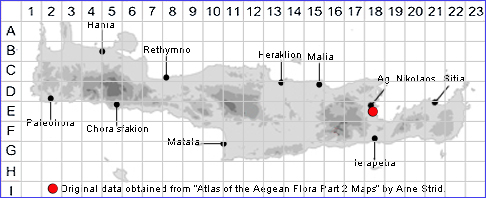SPECIES DESCRIPTION
TRIFOLIUM CLYPEATUM
Family and Genus:- See- LEGUMINOSAE/Subgen. TRIFOLIUM/Sect.
Common Names:- None
Homotypic Synonyms:- Triphylloides clypeata.
Meaning:- Trifolium (L) With three leaflets.
Clypeatum (L) Having structures resembling circular Roman shields.
General description:- Sparingly branched annual.
Stems:-
1) 20-40 cm, tall sparsely pilose throughout.
Leaves:-
1) Lower, alternate, the uppermost opposite.
2) Leaflets, 10-20 mm, obovate-cuneate, obtuse, shallowly denticulate.
3) Stipules, large, ovate, those of the uppermost leaves. connate for most of their
length.
Flowers:-
1) Calyx-tube, 10 ribbed; teeth herbaceous, the lower longer and broader than the
others, ovate-lanceolate.
2) Peduncles, 10-60 mm, hairs often appressed.
2) Corolla, 20-30 mm, much longer than the calyx, pink or white.
3) Fruiting heads, ± globose, 25-40 mm diam with persistent spreading accrescent
calyces.
Key features:-
1) Teeth of the fruiting calyx erecto-patent, lanceolate or setaceous from a
triangular base, usually 1-veined.
2) Corolla, 20-30 mm.
3) Lower tooth of the fruiting calyx twice as long as the others
Habitat:- Seasonally damp habitats in terraced olive and mastic groves, roadsides,
vineyards and ruderal habitats. 0-500(-900) m.
Distribution:- No Greek records outside of the Aegean area. - W & S Anatolia,
extending to Cyprus, W Syria and Palestine. Very rare on Crete currently know
from only one location near Istron bay in the east.
Flowering time:- Feb-May.
Photos by:- Courtesy of Wiki-Commons

